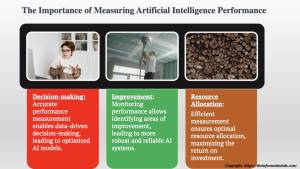Politics
How Do Patients Benefit From Artificial Intelligence
Published
2 years agoon
By
Drew Simpson
Artificial intelligence in healthcare has come a long way. The use of computers has advanced significantly over the past few years. Today, sophisticated machines have been developed to perform human tasks like analyzing and interpreting data and assisting with problem-solving.
While machine learning (ML) has been widely used in many industries, the use and application of Artificial Intelligence (AI) in healthcare is still relatively new. It is only recently that we have seen AI move from the world of academics and research laboratories to hospitals.
AI is used to assess risks, make an informed diagnosis, and perform precise surgical procedures. Today, AI is employed in all types of medical specialties and services, including rural care, surgery prioritization, drug discovery, or survival analysis.
Artificial Intelligence in Healthcare — Significant Patient Benefits
Some of the key areas where AI has been of significant benefit in healthcare include:
Public Health and Big data
AI has excelled in analyzing Big data collected by healthcare organizations. AI allows rapid analysis of data. Data facilitates proactive risk assessment, narrows gaps in public health, and explains how behavior, genetics, and environmental factors affect population health.
By combining this information with diagnostic data, AI provides a holistic approach to patient treatment protocols.
One of the most significant benefits of AI in population studies is predicting at-risk populations based on genetic, behavioral, and social factors. The potential of AI in public health is enormous and is now being exploited by healthcare institutions to offer more personalized, data-driven care to patients and help improve outcomes.
Clinical Decision Making
In medicine, the differential diagnosis of any disorder is huge. A differential diagnosis takes time, labor, and money to get a definitive diagnosis. AI has simplified this process significantly.
Machine learning algorithms can reach a definitive diagnosis faster and with greater accuracy than conventional pathways. As a result, the use of AI in clinical diagnosis has also reduced diagnostic errors and allowed for faster treatment of serious medical disorders.
AI-enabled tools can comb through vast amounts of patient clinical data, which can go a long way in reaching a timely diagnosis and initiating early treatment.
AI-Assisted Surgery
Another area where AI has excelled is its use in robotic surgery. Advances in electronic technology have led to the development of robots that can now perform delicate surgery. The surgeon still controls the robot, but the robot can make micro dissections and enter delicate spaces that would be impossible with the human hand.
Robots have arms with precise movements and can perform complex operations on the brain and heart with perfect precision. This has been shown to lower the risk of blood loss and reduce complications. Also, all data from robotic surgeries can be saved and can facilitate learning and training for surgeons.
Better Healthcare Delivery and Accessibility
People who live in rural areas often have difficulty accessing specialists. Wait times can be pretty long, and people would have to travel to big cities. This not only causes inconvenience but can also be expensive for patients.
With AI, primary care physicians can evaluate patients with all types of medical disorders, whether they live in the city or a rural area. For example, AI robots can screen for eye diseases and send the images to a specialist who recommends a treatment. This is enormously beneficial for patients as the diagnosis is made rapidly, and their treatment can start immediately.
The use of AI in rural areas has allowed primary care physicians to effectively triage patients who need urgent treatment and those who can be managed effectively.
Overall, developing an AI digital infrastructure in rural areas can make it possible for people in these areas to get access to state-of-the-art medical diagnoses and faster delivery of care.
Artificial intelligence in healthcare Helps Mitigate Shortage of Specialists
There is no shortage of primary care physicians, but specialists are often unavailable outside the main cities and towns. In low-resource areas, AI has helped with diagnosis when interpreting imaging studies like chest x-rays, CT scans, PET scans, and MRIs.
A Primary Care Physician doesn’t have to wait for days or weeks to get a reading from a radiologist.
AI can interpret these images on the spot with great accuracy. For patients, this means no more waiting for a diagnosis, and it saves an enormous amount of time traveling back and forth to a radiologist.
Optimize Efficiency
Healthcare institutions are complex entities with thousands of patients, enormous amounts of patient data, and extensive interconnected processes and systems. This can often undermine efficiency, lead to long wait times for patients, and, in some cases, even lead to delays or missed appointments.
Data shows that AI can quickly shift through vast amounts of patient data within the electronic medical record and ensure that no patient is left behind or has a missed appointment. In addition, AI can prioritize services based on available resources and enhance revenue cycle performance by optimizing workflows.
Artificial intelligence in healthcare is immense both in and outside healthcare institutions
The potential for AI in healthcare is immense both in and outside healthcare institutions. Hospitals face constant financial challenges. AI can help make up for operational inefficiencies, rising costs, and a deficit of healthcare workers. Technologies like AI will help improve access and delivery of medicine and, at the same time, improve patient outcomes.
As AI continues to see an influx at all levels of healthcare, large amounts of healthcare data can be extracted and analyzed correctly. The data read by AI can provide greater insight into the causes of complex disorders. Clinicians can rely on the AI helps that identify conditions and benefit from guidance to determine effective treatment strategies.
Using Automated Machine Learning (AML) helps data analysis processes
The use of Automated Machine Learning (AML), in particular, goes a long way in helping automate the data analysis process. AML uses automatic algorithm selection, result visualization, and improved interpretation.
Data Analysis is more accurate in guiding decision-making
There are several machine learning processes and algorithms that can be applied to make healthcare data more useful to improve the decision-making process for clinicians. This can, in turn, improve diagnosis and treatment and impact patient survival and mortality.
Image Credit: Provided by the Author; Thank you!
Benedict Timmerman
Benedict Timmerman is a Senior IT Experience Analyst supporting clients operating within the AI industry. Benedict covers data and machine learning solutions, providing quantitative and qualitative analysis on the available practices, people and markets. Benedict also spearheads the company’s lead generation process for its clients designing outreach campaigns.
You may like
-


Google DeepMind wants to define what counts as artificial general intelligence
-


Enabling enterprise growth with data intelligence
-


Everything you need to know about artificial wombs
-


The Download: brain bandwidth, and artificial wombs
-


Best Artificial Intelligence Performance Measurement Solution in 2023
-


Systems of Record are Required for Systems of Intelligence
Politics
Fintech Kennek raises $12.5M seed round to digitize lending
Published
6 months agoon
10/11/2023By
Drew Simpson
London-based fintech startup Kennek has raised $12.5 million in seed funding to expand its lending operating system.
According to an Oct. 10 tech.eu report, the round was led by HV Capital and included participation from Dutch Founders Fund, AlbionVC, FFVC, Plug & Play Ventures, and Syndicate One. Kennek offers software-as-a-service tools to help non-bank lenders streamline their operations using open banking, open finance, and payments.
The platform aims to automate time-consuming manual tasks and consolidate fragmented data to simplify lending. Xavier De Pauw, founder of Kennek said:
“Until kennek, lenders had to devote countless hours to menial operational tasks and deal with jumbled and hard-coded data – which makes every other part of lending a headache. As former lenders ourselves, we lived and breathed these frustrations, and built kennek to make them a thing of the past.”
The company said the latest funding round was oversubscribed and closed quickly despite the challenging fundraising environment. The new capital will be used to expand Kennek’s engineering team and strengthen its market position in the UK while exploring expansion into other European markets. Barbod Namini, Partner at lead investor HV Capital, commented on the investment:
“Kennek has developed an ambitious and genuinely unique proposition which we think can be the foundation of the entire alternative lending space. […] It is a complicated market and a solution that brings together all information and stakeholders onto a single platform is highly compelling for both lenders & the ecosystem as a whole.”
The fintech lending space has grown rapidly in recent years, but many lenders still rely on legacy systems and manual processes that limit efficiency and scalability. Kennek aims to leverage open banking and data integration to provide lenders with a more streamlined, automated lending experience.
The seed funding will allow the London-based startup to continue developing its platform and expanding its team to meet demand from non-bank lenders looking to digitize operations. Kennek’s focus on the UK and Europe also comes amid rising adoption of open banking and open finance in the regions.
Featured Image Credit: Photo from Kennek.io; Thank you!
Radek Zielinski
Radek Zielinski is an experienced technology and financial journalist with a passion for cybersecurity and futurology.
Politics
Fortune 500’s race for generative AI breakthroughs
Published
6 months agoon
10/11/2023By
Drew Simpson
As excitement around generative AI grows, Fortune 500 companies, including Goldman Sachs, are carefully examining the possible applications of this technology. A recent survey of U.S. executives indicated that 60% believe generative AI will substantially impact their businesses in the long term. However, they anticipate a one to two-year timeframe before implementing their initial solutions. This optimism stems from the potential of generative AI to revolutionize various aspects of businesses, from enhancing customer experiences to optimizing internal processes. In the short term, companies will likely focus on pilot projects and experimentation, gradually integrating generative AI into their operations as they witness its positive influence on efficiency and profitability.
Goldman Sachs’ Cautious Approach to Implementing Generative AI
In a recent interview, Goldman Sachs CIO Marco Argenti revealed that the firm has not yet implemented any generative AI use cases. Instead, the company focuses on experimentation and setting high standards before adopting the technology. Argenti recognized the desire for outcomes in areas like developer and operational efficiency but emphasized ensuring precision before putting experimental AI use cases into production.
According to Argenti, striking the right balance between driving innovation and maintaining accuracy is crucial for successfully integrating generative AI within the firm. Goldman Sachs intends to continue exploring this emerging technology’s potential benefits and applications while diligently assessing risks to ensure it meets the company’s stringent quality standards.
One possible application for Goldman Sachs is in software development, where the company has observed a 20-40% productivity increase during its trials. The goal is for 1,000 developers to utilize generative AI tools by year’s end. However, Argenti emphasized that a well-defined expectation of return on investment is necessary before fully integrating generative AI into production.
To achieve this, the company plans to implement a systematic and strategic approach to adopting generative AI, ensuring that it complements and enhances the skills of its developers. Additionally, Goldman Sachs intends to evaluate the long-term impact of generative AI on their software development processes and the overall quality of the applications being developed.
Goldman Sachs’ approach to AI implementation goes beyond merely executing models. The firm has created a platform encompassing technical, legal, and compliance assessments to filter out improper content and keep track of all interactions. This comprehensive system ensures seamless integration of artificial intelligence in operations while adhering to regulatory standards and maintaining client confidentiality. Moreover, the platform continuously improves and adapts its algorithms, allowing Goldman Sachs to stay at the forefront of technology and offer its clients the most efficient and secure services.
Featured Image Credit: Photo by Google DeepMind; Pexels; Thank you!
Deanna Ritchie
Managing Editor at ReadWrite
Deanna is the Managing Editor at ReadWrite. Previously she worked as the Editor in Chief for Startup Grind and has over 20+ years of experience in content management and content development.
Politics
UK seizes web3 opportunity simplifying crypto regulations
Published
6 months agoon
10/10/2023By
Drew Simpson
As Web3 companies increasingly consider leaving the United States due to regulatory ambiguity, the United Kingdom must simplify its cryptocurrency regulations to attract these businesses. The conservative think tank Policy Exchange recently released a report detailing ten suggestions for improving Web3 regulation in the country. Among the recommendations are reducing liability for token holders in decentralized autonomous organizations (DAOs) and encouraging the Financial Conduct Authority (FCA) to adopt alternative Know Your Customer (KYC) methodologies, such as digital identities and blockchain analytics tools. These suggestions aim to position the UK as a hub for Web3 innovation and attract blockchain-based businesses looking for a more conducive regulatory environment.
Streamlining Cryptocurrency Regulations for Innovation
To make it easier for emerging Web3 companies to navigate existing legal frameworks and contribute to the UK’s digital economy growth, the government must streamline cryptocurrency regulations and adopt forward-looking approaches. By making the regulatory landscape clear and straightforward, the UK can create an environment that fosters innovation, growth, and competitiveness in the global fintech industry.
The Policy Exchange report also recommends not weakening self-hosted wallets or treating proof-of-stake (PoS) services as financial services. This approach aims to protect the fundamental principles of decentralization and user autonomy while strongly emphasizing security and regulatory compliance. By doing so, the UK can nurture an environment that encourages innovation and the continued growth of blockchain technology.
Despite recent strict measures by UK authorities, such as His Majesty’s Treasury and the FCA, toward the digital assets sector, the proposed changes in the Policy Exchange report strive to make the UK a more attractive location for Web3 enterprises. By adopting these suggestions, the UK can demonstrate its commitment to fostering innovation in the rapidly evolving blockchain and cryptocurrency industries while ensuring a robust and transparent regulatory environment.
The ongoing uncertainty surrounding cryptocurrency regulations in various countries has prompted Web3 companies to explore alternative jurisdictions with more precise legal frameworks. As the United States grapples with regulatory ambiguity, the United Kingdom can position itself as a hub for Web3 innovation by simplifying and streamlining its cryptocurrency regulations.
Featured Image Credit: Photo by Jonathan Borba; Pexels; Thank you!
Deanna Ritchie
Managing Editor at ReadWrite
Deanna is the Managing Editor at ReadWrite. Previously she worked as the Editor in Chief for Startup Grind and has over 20+ years of experience in content management and content development.
